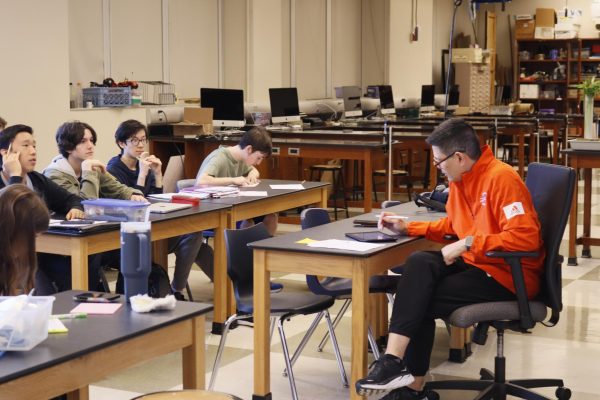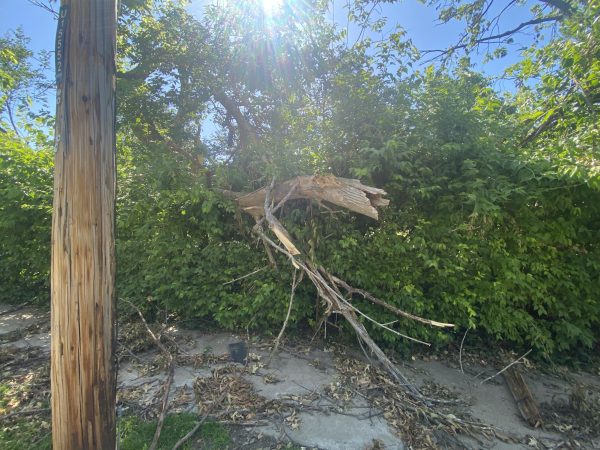The Exacerbation of Waste During the COVID-19 Pandemic
Failing restaurants and businesses, take-out, and single-use medical supplies like masks and gloves have contributed to drastic waste increase in 2020
Amid the devastating wildfires in the West, the surging cases of COVID-19, and the boisterous quarreling of politicians, another issue has arisen in recent months. The COVID-19 pandemic has caused a collapse of waste management chains and resulted in a dramatic increase in waste and pollution.
Recycling systems across the world have begun to break down because of budget strains, which means thousands of tons of extra plastic are being reallocated to incinerators, landfills, and the ocean. Although air quality has significantly improved overall as a result of decreased air and road travel, the oceans have experienced adverse effects.
In March, state lockdowns triggered a wave of panic-buying, particularly of products such as toilet paper, paper towels, hand sanitizer, surgical masks, gloves, and other one-time use materials. Masks and gloves are two of the biggest contributors to the increase in waste in recent months, with approximately 129 billion face masks and 65 billion gloves being used globally each month. Also, the closure of thousands of schools, restaurants, businesses, and hotels has left many farmers with an enormous excess of perishable food which they have been forced to destroy and dispose of, and many grocery stores like Whole Foods and Trader Joe’s have switched to a non-reusable bag and container policy.
For restaurants still in business, many only offer outside seating, curbside pickup, and delivery. While many are eager to support their favorite eateries and local businesses, there has been a surge in plastic and styrofoam waste from single-use bags and containers.
As the economy took a hit, consumers turned to more affordable products rather than the environmentally-friendly ones. Prior to COVID-19, cities in America were already facing problems with the amount of styrofoam floating around in their landfills. Styrofoam is composed of a plastic called Polystyrene, which is very light and made up mostly of air. However, the airiness of the plastic is the cause of the problem. Styrofoam can hold its form due to the sheer amount of air in it. As a result, styrofoam does not break down unless exposed to extremely high temperatures with a specialized incinerator, leaving behind a little water and carbon. However, if destroyed with a normal fire as they often are, the styrofoam will leave behind pollutants. In Maryland, foam containers for takeaway were banned earlier this year. In Seattle, styrofoam has already been banned since 2008. As people stay at home, the amount of takeaway and cooking they do have drastically increased. Home DIY’s and the increase in online shopping also means an increase in packaging, which is often made of styrofoam. According to Bruce Davidson, an overseer of Brockton, Ontario’s styrofoam recycling program, many cities have collected twice as much styrofoam as usual, with numbers going up as high as 1,000 styrofoam containers a week.
Landfills are not the only places that have been affected by the overflow of plastics.
The ocean has been suffering as well. About eight million metric tons of plastic enter the ocean each year and with little change happening there is expected to be a larger weight of plastic than fish in the ocean by 2050. This, however, was before COVID-19, and with the increased amount of takeout and other factors, the usage of plastic in 2020 is expected to be 30% more than in 2019 according to an article from ACS Publications, “COVID-19 Pandemic Repercussions on the Use and Management of Plastics.”
With the number of face masks and gloves in the billions each month, the amount of plastic soon to be in the ocean has shot up. But this is not the only problem. Due to the oil collapse earlier this year, the price of plastic lowered making plastic cheaper than ever. As oils are used to make plastics, the price to make plastic has drastically dropped. Pushing aside the more expensive alternative plastics, for the cheaper newly created virgin plastic. Around the world recycling systems are being strained leading to more of the plastic to end up in landfills. Often mismanaged, the waste and plastics in the landfills end up spilling out into the environment and eventually the ocean. The virus has increased the lack of care towards the waste system leading to an abundance of waste and plastic due to the pandemic in the ocean.
Still, there are several ways that waste can be reduced from restaurants, businesses, and homes. For those looking to be more environmentally-friendly while shopping, groceries and other items can be bagged using reusable bags and containers that customers bring with them in their cars. This would significantly reduce the number of paper and plastic bags used, as most people usually leave the store with at least four to five bags.
Single-use masks are also usually made from polypropylene, so it is also advisable to wear a cloth mask to reduce waste. One way for restaurants to reduce their plastic waste is to ask customers ordering take-out if they would like plastic utensils with their order. This is not only beneficial for their environment, as it also helps restaurants to save money during the pandemic. People can also shop at farmers’ markets to reduce packaging waste and to support their local community. There is certainly hope for the future when it comes to reducing waste, and as large businesses and companies can not always be relied upon to go green, change must start within homes.
A $50 or more donation includes a subscription to the Clayton High School Globe 2024-2025 print news magazine.
We will mail a copy of our issues to the recipients of your choice.
Your donation helps preserve the tangible experience of print journalism, ensuring that student voices reach our community and that student democracy thrives.

Seraphina Corbo is a junior at CHS who is a Senior Managing Editor on the Globe this year. From an early age, Seraphina always loved writing and hearing peoples' stories and opinions....


![Nathan Dinwiddie, a material handler at the Columbia Material Recovery Facility at
5700 Peabody Road, removes plastic material that doesn’t belong in #1 through #7
plastic recyclables. [Don Shrubshell/Tribune file photo]spell their names correctly](https://www.chsglobe.com/wp-content/uploads/2020/10/Plastic_bags_pollution-1-900x597.jpg)









